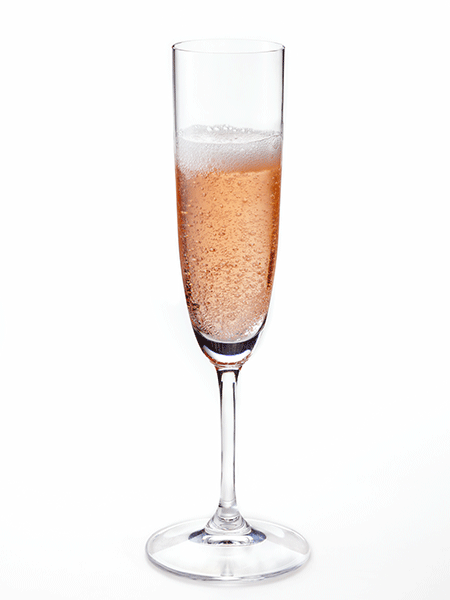
If you venture out for brunch this summer, chances are you’ll encounter a Prosecco Rosé on the wine list. The Prosecco DOC Consortium (Consorzio Tutela Prosecco DOC) approved production of Prosecco Rosé in May 2020, and 16.8 million bottles were produced in just the first year. The Consortium estimates that production of pink Prosecco could reach 40 to 50 million bottles by 2021, and most of that (up to 85 percent) will be exported.
You might be thinking, “I’ve been drinking Prosecco Rosé for years, what’s the big deal?” It’s true that, as of 2017, 57 percent of Prosecco producers were bottling a sparkling rosé, but it wasn’t officially Prosecco. Many of the wines would have been labeled Vino Spumante di Qualità, a category that could include any grape from anywhere in Italy.
In the nine provinces of Veneto and Friuli that make up the Prosecco DOC, sparkling rosés are made with raboso, merlot, pinot noir and even nerello mascalese shipped from Sicily’s Mount Etna. Many people assumed those pink sparklers were Prosecco. Market research from 2017—two years before the Prosecco Rosé category was created—shows that 72 percent of American respondents believed they had either bought or seen a Prosecco Rosé.
As sales of Prosecco and pink wines of every type soared over the last decade, Consortium members spent several years researching, experimenting and debating a recipe for Prosecco Rosé DOC. They settled on a wine made from at least 85 percent glera, the primary white grape of Prosecco, with the color derived from 10 to 15 percent of pinot noir vinified as red wine. The bubbles come from a second fermentation of at least 60 days (twice the minimum for Prosecco DOC) in stainless-steel autoclaves, and the wines must be vintage dated.
Pinot noir grows in all nine provinces, and it was found to be the red variety that complemented glera without overshadowing it. According to Fabio Zardetto, “Pinot noir should give a little more personality to the wine, but not completely change it.” This sentiment was echoed by many producers during my visit to the region in May, including Gianfranco Zanon, winemaker at Valdo, who said, “The challenge for Prosecco Rosé is to find the perfect color and aroma to match with glera, avoiding any domination. We want the consumer to recognize it as Prosecco, but with subtle color and strawberry flavors.” Many producers are so bullish on the new category that they are discontinuing their Vino Spumante rosés.
Others in the region are less enamored with pink Prosecco, including some located in the steep hills of the Conegliano Valdobbiadene area, where Prosecco Superiore DOCG is produced. Loris Dall’Acqua of Col Vetoraz, a winery located near the top of the steep Cartizze zone (historically considered the most prestigious growing area for Prosecco), notes the long history of Prosecco as a white wine vinified from white grapes (primarily glera, with up to 15 percent of bianchetta, perera and verdiso). Although grapes from the pinot family (pinots noir, grigio and blanc, along with chardonnay) were approved varieties more recently, he considers those who favor this new category to be “market opportunists,” and pink Prosecco to be “a commercial invention and devoid of any territorial link.”
With those millions of bottles flooding retail shelves and by-the-glass wine lists, consumers will have ample chance to decide for themselves whether Prosecco Rosé is a marketing ploy or an appealing new choice in sparkling wine. At least, with the new regulations, you’ll know what is in the glass, and when you take your first sip, you’ll find a familiar friend.
is the Italian wine editor at Wine & Spirits magazine.
This story appears in the print issue of August 2021.
Like what you read? Subscribe today.

















